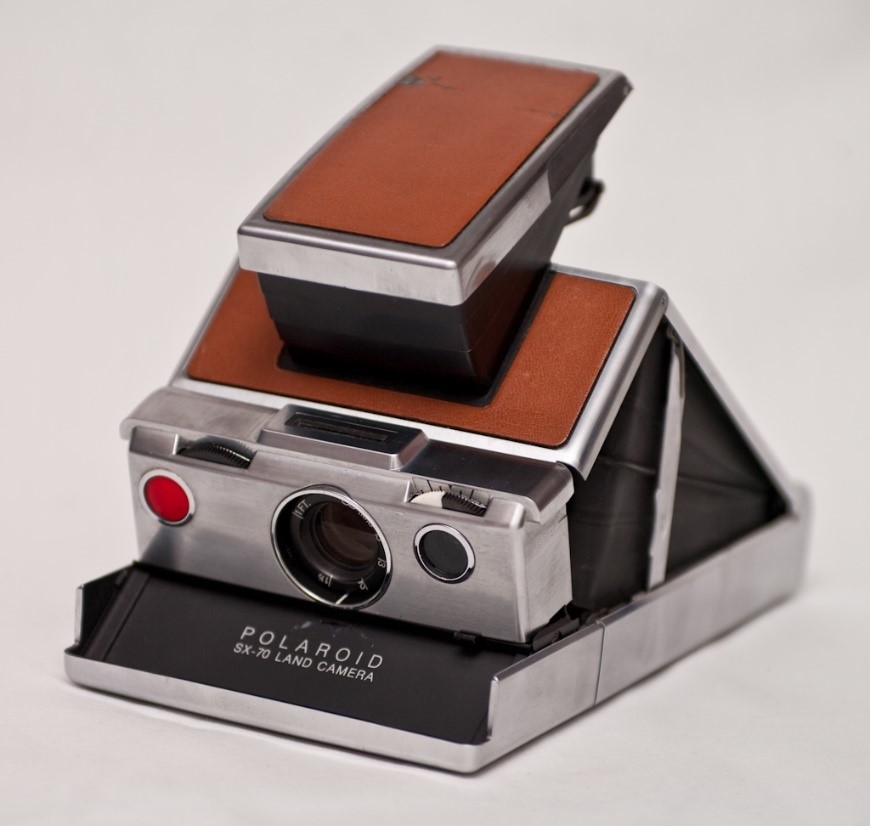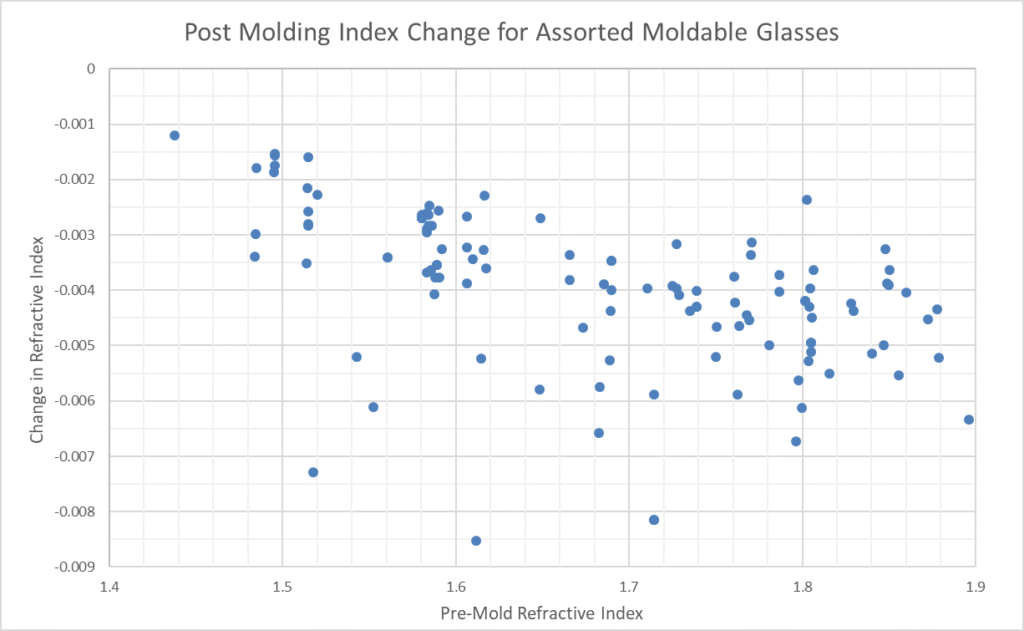In the world of optical design aspheric elements have been widely used for decades. The first commercial use of glass aspheric lenses was in cine lenses produced by Elgeet (now Navitar) in 1956. The venerable Polaroid Swinger (1965) and the following SX-70 (1972, shown below) used molded plastic lenses and were manufactured in millions of units. Today molded aspheric plastic lenses are in every cell phone.
An aspheric lens element is one where the surface form departs from a sphere. Aspheric lenses are more challenging to design, manufacture, and test – however they provide significant benefits that make them highly desirable to the optical designer. Aspheric lenses generate fewer aberrations (better image quality) while using fewer lens elements than a design using only spherical lens elements. The use of glass aspheres is still not as mainstream as one might think given these obvious benefits. Polished glass aspheres remain very expensive relative to polished spheres due to the difficulty of scaling the manufacturing process. An alternate production method is to mold glass aspheres. This provides an opportunity to significantly reduce unit cost and thereby open up the application space for aspheric glass lenses.
When does Optikos design for molded glass and what pitfalls do we watch for?
Compared to the history of lens manufacturing, molding glass lenses is a relatively new fabrication method – over the past few years we’ve seen impressive advances in vendor capabilities and more and more glass types coming to market.
One should understand that glass molding is not the same as plastic molding. For glass molding a glass pre-form or fob is created that is similar to the final part shape – e.g. a glass sphere for a bi-convex lens. Then high heat and pressure are applied to form the glass fob into the final shape. This requires unique material properties and highly specialized processes which in-turn limit what glasses, what shapes, and what tolerances can be achieved. Optikos takes all of these considerations into account when deciding if, and how, to design aspheres into a system.
Below some of the advantages and disadvantages of molded glass aspheres are summarized:
Pros:
- Aspheric form – this is the obvious and primary benefit. We should note that using an aspheric form typically leads to a reduction in element count. For size or weight constrained designs an asphere may be the magic bullet.
- Diameter and Center Thickness – Molded glass aspheres can achieve amazing diameter and center thickness tolerances – potentially below 5µm! This is unquestionably better than what can be achieved with polished glass elements in high volume. This enables very tight decenter tolerances on passively aligned (drop together) assemblies.
- Thermal behavior – glass aspheres often provide significant advantages over plastic aspheres in thermally challenging applications due to their lower thermal expansion and lower dn/dt. This same benefit is realized from spherical glass elements.
- Coating quality – another benefit compared to plastic aspheres is that glass aspheres can utilize high temperature dielectric coating processes. Spherical glass elements also realize this benefit.
Cons:
- Surface figure – molded glass aspheres will typically not achieve the same surface figure that you can achieve with a polished lens. That said, molded glass aspheres can still be quite good (well under 1 wave of figure error). One should carefully evaluate the performance impact of multiple spherical lenses (and their associated decenter, wedge, and CT tolerances) with the loss due to one aspheric element’s surface figure – the asphere may give you a better net result!
- Lens forms – glass molding does introduce limitations to the shapes and aspect ratios of lenses that can be molded, although this does seem to be an area of growth for manufacturers. You’re not going to see a glass gullwing anytime soon.
- Glass types – there are significantly fewer moldable glasses than polishable glasses. Just as some polished glasses require unique or challenging production processes, many moldable glasses are challenging to work with. It is always smart to check with your preferred vendor before committing to a glass.
- Index and Abbe Pt 1 – molded glass is more loosely controlled than slab glass. For highly color corrected systems we would be very wary of molded aspheres.
- Index and Abbe Pt 2 – pre-mold and post-mold refractive index varies significantly! See Figure 2 below. Make sure you design with the post-molded index. Lens design software will often give you the pre-mold value, which is not particularly helpful.
- Tooling Cost – the tooling for molded glass lenses is one to two orders of magnitude greater than polished glass elements. This is a significant investment.
- Prototyping Cost – Because the molding process changes the refractive index, to prototype a molded glass lens you may have to invest in the full tooling and mold prototypes! This means an extremely significant up-front tooling cost is required prior to de-risking the design.
- Unit cost – molded aspheres are still significantly more expensive than polished lenses, they may be anywhere from 3x the cost, up to 10x or more.
When considering the above points we start to see beneficial scenarios for molded glass aspheres. Small or lightweight designs that don’t require great color correction are a good choice. Particularly if those designs have challenging performance or environmental requirements that plastic elements cannot achieve. Optikos has successfully used molded aspheres in automotive lidar systems and defense applications. These both require very good athermalization, significant light collecting ability (low f-number), decent performance, and benefit from fewer elements/surfaces (size, weight, stray light).
There are scenarios where molded glass probably does not make sense. Ultra low-cost systems (e.g. consumer products) are not a great option unless athermalization forces you towards a glass or hybrid (glass/plastic) design. And broad color corrected systems and/or systems requiring near diffraction limited performance (e.g. microscope objectives) are probably not a good choice.
One final comment is that vendor capabilities vary significantly. Each manufacturer will have their specific preferences for glass types, lens forms, and achievable tolerances. Usually those preferences are at odds with your lens design software! As always, it’s smart to work with a trusted vendor early.
In summary, molded glass aspheres should be used with care and only when appropriate, but they are a great tool to have in the toolbox.
Return to Anywhere Light Goes blog.
Written by Haskell Kent, Optikos Corporation



